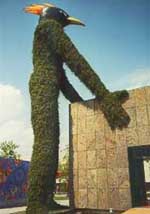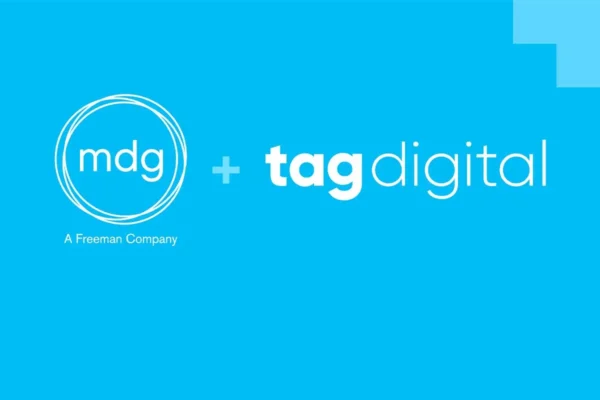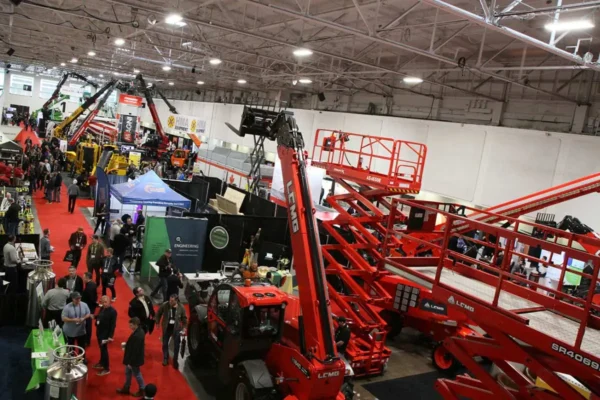Events and interesting facts that have shaped the industry
Highlights from the month of September
1873
The first ever exposition held in a German-speaking country was Weltausstellung 1873 Wien—Vienna Exposition 1873. It ran right through the month of September in Vienna, Austria. Although there were many types of exhibits, jewelry seemed to peak the interests of W.C. Aitken who produced a report which read, “Among the most brilliant and dazzling displays in the Vienna exhibition is that of jewelry. Within its limits it includes the ear or nose ornament, and necklet of the savage, formed with shells, fish scales, human teeth, seeds, berries or nuts, roughly perforated strung or connected together with vegetable fibre or bits of wire, for the adornment of dusky-skinned beauty.”-Aitken
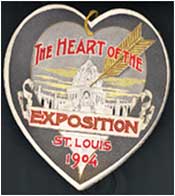 1904
1904
The Louisiana Purchase Exposition, in St. Louis, Missouri, ran from April to December on 1, 272 acres of what currently is Forest Park. The technological expo introduced the world to the ice cream cone. Isn’t that sweet?
1939-40
The New York World’s Fair held in New York City, emerged post depression era. The event ran from April to October of 1939, and re-opened again in May of 1940 and wrapped up again in October. With nearly 45 million attendees and 33 participating countries, the tradeshow celebrated the theme “The World of Tomorrow.” The Fair projected a tomorrow that was sanitary, secure and overflowing with consumer goods. Under the silhouette of the Perisphere and Trylon, the New York World’s Fair portrayed futuristic technologies like television and the interstate highway system while exhibiting the products of its day.
1975
Expo’75 was in full float in September. Hosted by Okinawa, Japan, it was mostly on a suspended ocean platform called the
Aquapolis. The event was from July to January and the theme was “The Sea we would like to see.”
2000
In Hanover, Germany Expo 2000 was the first exposition that was allowed by the Bureau International des Expositions to utilize existing structures in exhibits. It was an expo which highlighted more than just technological advances. Its theme “Humankind—Nature—Technology: A New World Arising,” brought forth some unique displays.
Andre Heller’s environmental eye-catcher at EXPO 2000.
Tradeshow history reported by Exhibit City News
1999
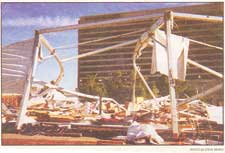
The Outdoor Retailer Summer Market Show’s pavilion structures literally flew away in September of ’99 when, in an act of God, a tornado came twisting through downtown Salt Lake City sucking up and spitting out everything in its path. Unfortunately that included the booths of over 330 exhibitors; however, camaraderie prevailed in the hearts of attendees as companies made room for the displaced in their own booths contained in the main hall. The show must go on!
2000
Women in the industry were seeing progress for all their hard work (on the average, women work twice as hard or at least as hard as men in the industry). The Trade Show Exhibitors Association revealed in a salary survey that the gender wage gap had shrunk by 11 percent since the previous year. Females went from earning 73.5 cents for every dollar earned by a male to 85 cents on the dollar.
2003
3D Designs used video game technology to fully customize virtual tradeshows in which visitors walk from booth to booth gathering information about each company as though they were physically attending a tradeshow. Exhibit designs mirrored those of actual tradeshows and robot attendants were employed to attract the attention of passersby to custom built virtual conference rooms. The idea was meant to make tradeshows accessible worldwide.
2005-2006
In September of 2005 hurricane Katrina roared ashore on the Louisiana and Mississippi Gulf on Labor Day weekend causing massive flooding, damage and death, as well as wiping out the convention industry there. More than 150 conventions and tradeshows were cancelled or re-located while the Ernest N. Morial Convention Center became a refuge for those escaping the storm. One year later, in 2006, it was hard to tell a hurricane had even been there and shows began to trickle back to New Orleans.
2008
The World Congress of Families (WCF) supported Article 16, par. 3, of the Universal Declaration of Human Rights, agreeing that the family is the natural and fundamental group unit of society, and is entitled to protection by society and the state, as they selected Amsterdam, the world’s capitol for legalized marijuana, for their fifth annual congress venue. In WCF’s defense, nowhere in their affirmations do they endorse or even mention drug use or the education of children in such matters. Pro or con.
MoreTradeshow History




